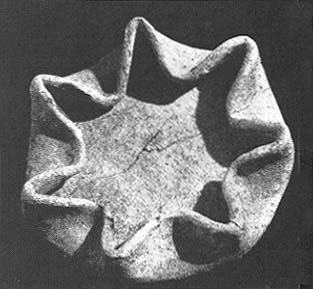Image Details

Lee Ellenberger, BASOR (1960)
In a vision of the lampstands to be included in the Second Temple, the prophet Zechariah describes “a lampstand all of gold with a bowl on top and seven lamps which were on top of it and seven pipes to the seven lamps; and there are two olive trees by it, one on the right side of the bowl, and the other on the left.” (Zechariah 4:2–3).
Perhaps this vision recalls the actual menorah used in the earlier Solomonic Temple. Note that Zechariah’s lampstand is not branched but, nevertheless seven lights emanate from the bowl on top of the stand.
The seven-spouted oil lamp shown here was found at Tell Dothan, north of Shechem. The spouts were formed by pinching the clay together before drying. A wick could then be placed in each of the seven spouts.
